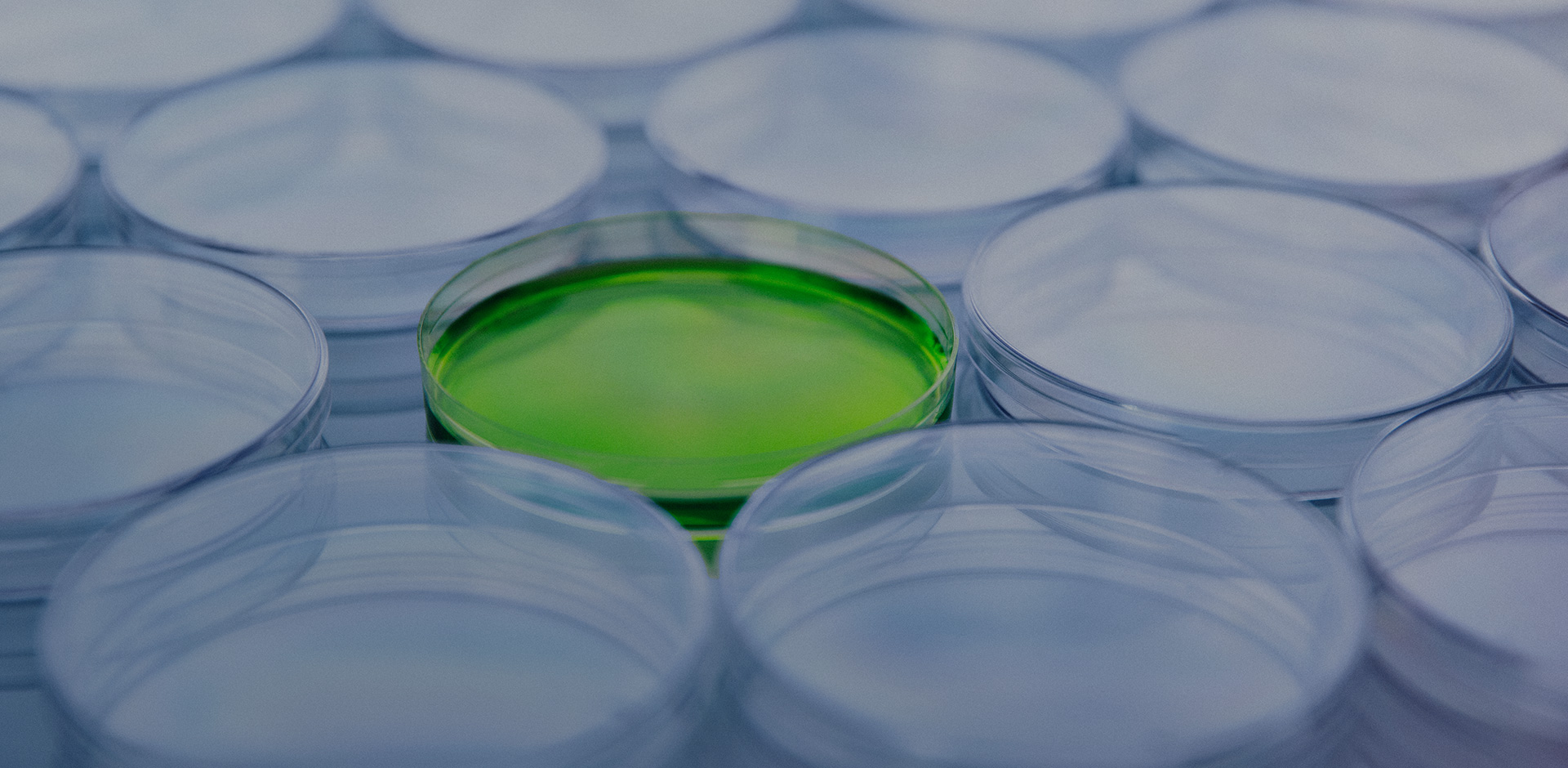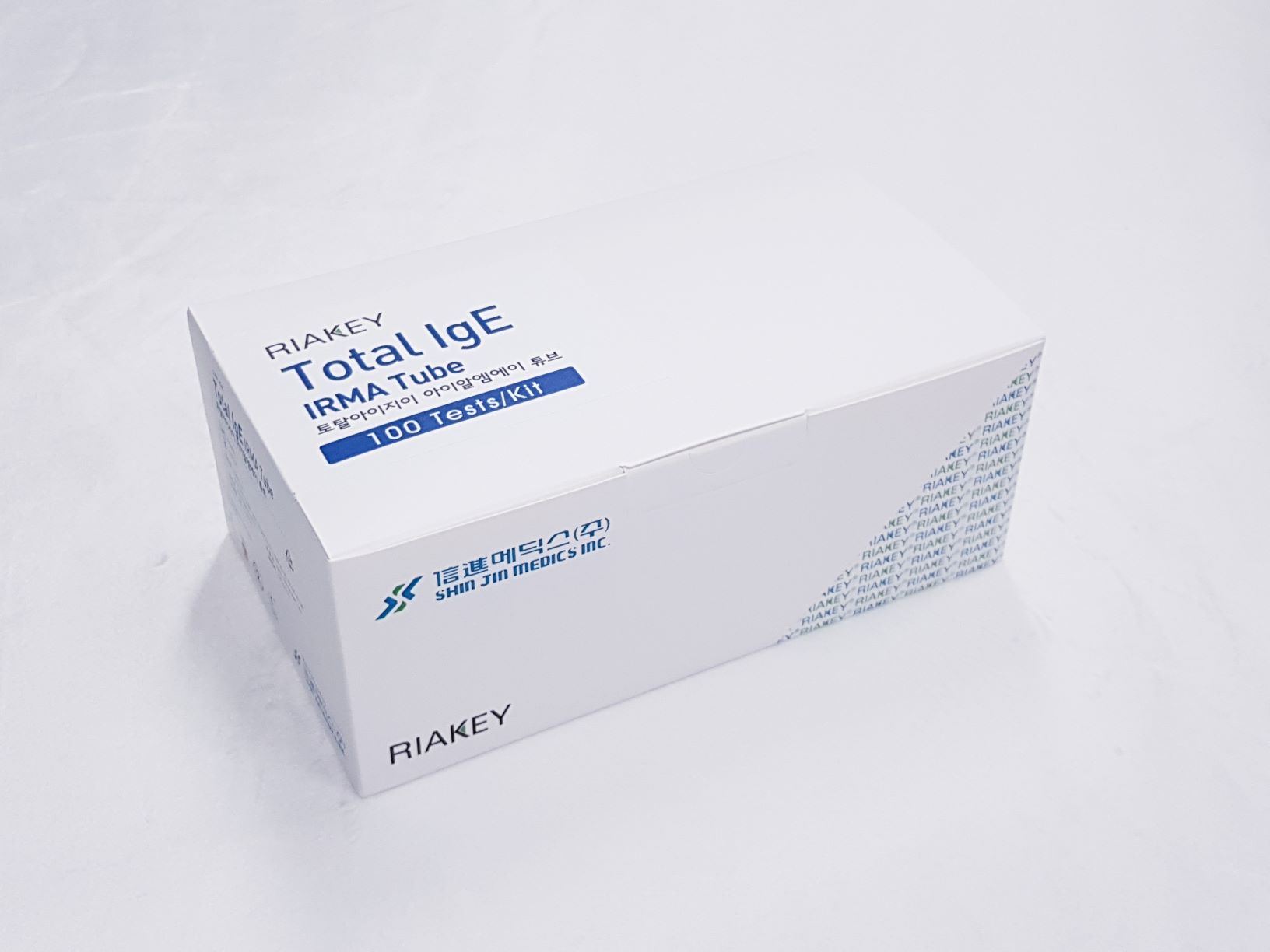Total IgE IRMA Tube
RIAKEY Total IgE IRMA Tube is an immunoradiometric assay on coated tubes for the IN VITRO determination of total IgE in human serum.
Summary
-
KFDA Registration No
17-44
-
CAT No
RF48
-
TEST METHOD
IRMA
-
SAMPLE VOLUME
25 ul
-
INCUBATION TIME
90'RT
-
STD RANGE
0-1000 IU/ml
Download File
Intended Use
RIAKEY Total IgE IRMA Tube is an immunoradiometric assay on coated tubes for the IN VITRO determination of total IgE in human serum.
INTRODUCTION
The immunoglobulins E (IgE) which were first isolated in 1968 by Bennich and Johansson in Uppsala, are the fifth class of immunoglobulins. The monomer for IgE is formed by two light chains linked by sulfide bridges, and two heavy chains able to fix the complement. The IgE have a molecular weight ranging from 188 to 196 kDa. They consist of 12% carbohydrates and have a sedimentation constant of 7.925S. The reaginic activity of IgE is due to the remarkable affinity of the e chains with specific receptors which are present on the membrane of mast cells as well as polynucleotide basophils. The release of pharmacological mediators (ex. histamine) is caused by the interaction between IgE (bound to membrane receptors) and inhaled or adsorbed allergens. In atopic subjects (high IgE concentration) the receptor sites are 100% saturated. In non-atopic subjects (low IgE concentration) the maximum saturation reaches 20%. In normal subjects, IgE concentration is extremely low. In subjects with allergic pathologies (asthma, hay fever, eczemas) IgE concentrations are high.
IgE concentration is correlated with the degree of immunostimulation. The more allergens there are, to which the patient is allergic and exposed, the more serious the symptoms will be, and the higher will be the IgE level. The IgE concentration may be affected by circadian variations. In addition, they vary considerably from person to person. IgE levels tend to increase from the time of birth up to 60-65 years of age, after which they may decrease. Low levels of IgE do not always exclude an allergic etiology. In fact, univalent allergies (sensitivity to a single allergen) are at times characterized by low IgE levels. In such cases, the diagnosis can be done only by highly sensitive tests for specific IgE.
PRINCIPLE OF THE ASSAY
The present method employs two anti-IgE monoclonal antibodies which recognize two different epitopes of the molecule. One antibody is adsorbed in solid phase (coated tube), the other (labeled with iodine-125) is used as conjugate. The sample to be tested and the labeled antibody are incubated simultaneously in the coated tube. The amount of bound conjugate will thus be directly proportional to the antigen concentration in calibrators and samples. At the end of the incubation, the unbound material is removed by aspiration and washing. The radioactivity in the tubes is measured in a gamma counter.
Use Precaution
Be careful when handling all samples, reagents, or devices used in the test as they may be the source of infection.
All reagents, human body samples, etc. are handled at the designated location.
- Do not use mixed reagents from different lots.
- Do not use reagents beyond the expiration date.
- Use distilled water stored in clean container.
- Use an individual disposable tip for each sample and reagent, to prevent the possible cross-contamination among the samples.
- Store the unused coated tubes at 2~8ºC in the appropriate bags with silica gel and accurately sealed.
- If large quantity of assay would be performed at one time, there might be substantial time variation between 60 tubes at one time to minimize time variation. Also, do not exceed 10 minutes for entire pipetting.
- Wear disposable globes while handling the kit reagents and wash hands thoroughly afterwards.
- Do not pipette by mouth.
- Do not smoke, eat or drink in areas where specimens or kit reagents are handle.
- Handle samples, reagents and loboratory equipments used for assy with extreme care, as they may potentially contain infectious agents.
- When samples or reagents happen to be split, wash carefully with a 3% sodium hypochlorite solution.
- Dispose of this cleaning liquid and also such used washing cloth or tissue paper with care, as they may also contain infectious agents.
- Avoid microbial contamination when the reagent vial be eventually opend or the contents be handled.
- Use only for IN VITRO.

